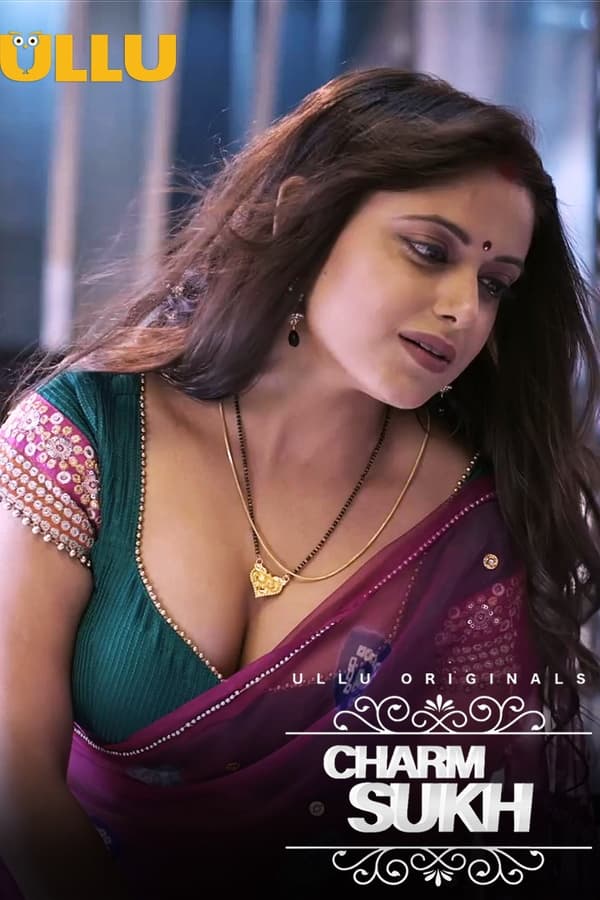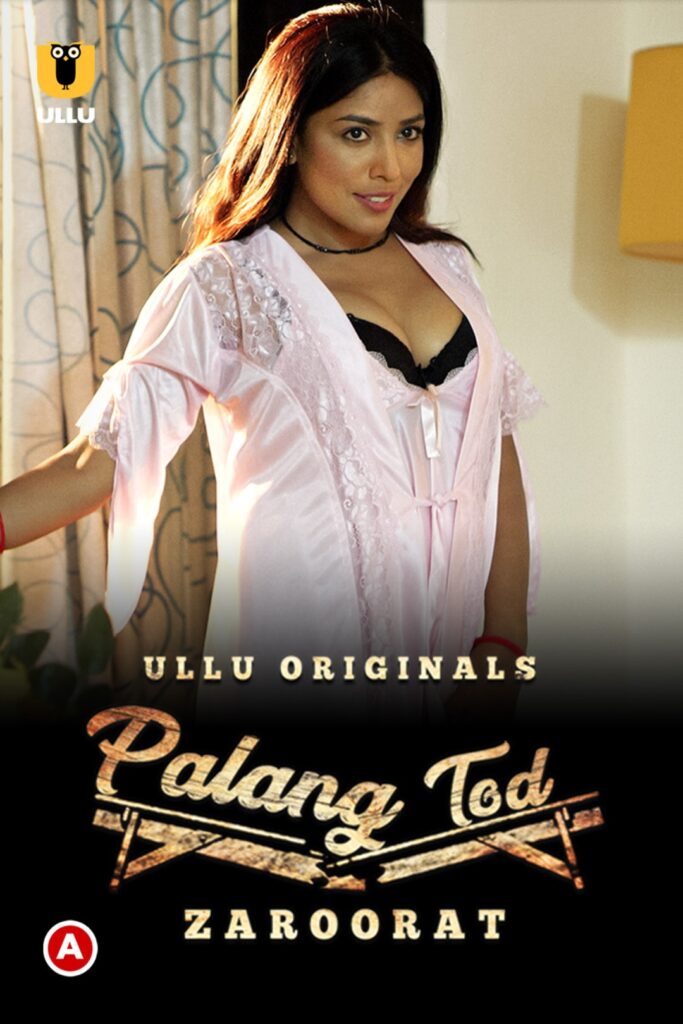The Indian OTT revolution has ushered in a variety of platforms catering to regional languages, short-format content, and unconventional narratives. Among these, Ullu has made a lasting impression with two of its most iconic series—Charmsukh and Palang Tod. Both have gained a cult-like following and raised questions about content boundaries, censorship, and the changing face of storytelling in India.
But fans often find themselves wondering:
Between Charmsukh and Palang Tod, which one is actually bolder?
Is one more provocative in terms of themes and scenes, or is it all just audience perception?
This article provides a side-by-side comparison of the two series, analyzing episodes, themes, storytelling, character psychology, and how each one pushes the envelope in different ways.
Understanding the Core Themes of Both Series
Before we dissect the boldness factor, let’s first understand what Charmsukh and Palang Tod actually represent as Ullu Originals.
What is Charmsukh?
Charmsukh loosely translates to “pleasure of desires” or “charms of satisfaction.” It’s a long-running anthology series that explores taboo desires and emotional conflicts, often within domestic or familial settings.
Core Themes:
- Illicit relationships
- Marital dissatisfaction
- Taboo romance (stepsiblings, extramarital affairs, teacher-student dynamics)
- Internal conflict between morality and desire
Unlike many other erotic series, Charmsukh often attempts to tie desire with emotional guilt or family honor, giving it a darker, more conflicted tone.
What is Palang Tod?
Palang Tod literally means “bed-breaker” and has a slightly more direct connotation of physical intimacy and passion. While also an anthology series, Palang Tod focuses more on lust-driven encounters and hidden secrets inside homes.
Core Themes:
- Caregiver fantasies
- Domestic help relationships
- Affair with stepmother/uncle-in-law
- Discoveries of infidelity
- Voyeurism and seduction
This series leans heavily on physical passion, visual appeal, and layered betrayal, often told in high-energy pacing with short arcs.
Episode Count and Popularity: A Quick Breakdown
| Metric | Charmsukh | Palang Tod |
|---|---|---|
| First Aired | 2019 | 2020 |
| No. of Episodes (2025) | 45+ | 35+ |
| Viewership (Estimated) | 150M+ | 130M+ |
| Fan Following | Tier II & III Viewers | Youth, Metro + Small Towns |
| Most Watched Episode | Jane Anjane Mein | Siskiyaan |
| Style of Boldness | Emotional/Taboo Driven | Visual/Action-Oriented |
Character Complexity vs. Fantasy Realism
Charmsukh: Emotional Desperation

Characters in Charmsukh are often unhappy with their current lives—an unfaithful husband, a neglected wife, or a confused daughter—and seek comfort in risky, often morally ambiguous relationships.
Episodes like Jane Anjane Mein, Chawl House, and Tuition Teacher emphasize psychological tension, where characters wrestle with inner guilt, temptation, and secrecy.
This makes Charmsukh bolder in mental conflict than physical act.
Palang Tod: Raw Temptation

In contrast, Palang Tod offers characters who are more self-aware of their lust, driven by instant attraction or opportunity. Episodes like Siskiyaan, Gaon Ki Garmi, and Caretaker are unapologetic and often bold right from the first scene.
The boldness here is more visible and physical—a straightforward expression of unfiltered desire, without deep introspection.
Visual Boldness: Which One Goes Further?
Let’s not ignore the visual aspect, because it’s often what drives the popularity of both shows.
Palang Tod
- Focuses on longer intimate scenes
- Brighter cinematography with close-up shots
- Scenes are placed strategically to maintain viewer engagement
Episodes like Siskiyaan 4 and Care Taker 2 are often discussed online for their provocative sequences.
Charmsukh
- Scenes are shorter but emotionally intense
- Often portrayed in dim-lit, moody settings
- Uses music and silence to enhance emotional awkwardness
So, Palang Tod is visually bolder, but Charmsukh offers a bolder narrative feel.
Language & Dialogue Style
Palang Tod
The dialogues are more modern, casual, and flirty, often bordering on cheeky or naughty. It feels like it’s made for a younger audience, with bolder banter.
Example:
“Aap ka dhyan rakhna meri zimmedari hai, sirf roz nahi… har waqt.”
Charmsukh
Language here is emotionally heavy, culturally rooted, and often uses metaphors or guilt-ridden expressions.
Example:
“Agar maa baap ko pata chala toh unki izzat mitti mein mil jayegi.”
So again, Charmsukh is bold in emotional language, Palang Tod is bold in suggestive dialogues.
Viewer Reaction and Online Buzz
Charmsukh
Viewers often debate the morality and psychology behind relationships shown in Charmsukh.
Reddit threads and YouTube comments show that fans are more emotionally invested in the series’ subtext.
It evokes reactions like:
- “She’s wrong, but I understand why she did it.”
- “This episode felt like it had a real story.”
Palang Tod
Has meme culture traction, viral clips, and short-form content being shared online.
People react with:
- “Too hot to handle!”
- “Ullu is not holding back anymore.”
Palang Tod wins the visual shock value, while Charmsukh gets more discussion-worthy attention.
Which One Faces More Censorship?
Interestingly, Charmsukh has received more formal complaints from social groups for “promoting incestuous overtones” (especially in Jane Anjane Mein).
Palang Tod, despite being more graphic, tends to avoid taboo relationships and focuses on consensual adult encounters, albeit exaggerated ones.
This indicates that Charmsukh is bolder thematically, even though Palang Tod feels more daring on the surface.
The Most Controversial Episodes (As of 2025)
Top 3 Boldest Charmsukh Episodes
- Jane Anjane Mein Part 5 – Step-son and stepmother romance
- Tuition Teacher – Student-teacher relationship
- Chawl House – Lust and betrayal among siblings and cousins
Top 3 Boldest Palang Tod Episodes
- Siskiyaan Series (All Parts) – Nurse-patient chemistry at its boldest
- Gaon Ki Garmi – Rural temptation told with uninhibited visual flair
- Caretaker 2 – Role-play fantasy taken to the next level
Cultural Impact and Viewer Demographics
Charmsukh resonates more with North Indian audiences who enjoy layered, emotional storytelling.
Palang Tod has a broader mass appeal due to its simpler structure and quick payoff.
Final Verdict: Charmsukh vs Palang Tod – Which One is Bolder?
If we define boldness as:
- Visual and sensory stimulation → Palang Tod wins
- Psychological and moral transgression → Charmsukh is bolder
So your choice depends on how you define boldness.
FAQ – Charmsukh vs Palang Tod
1. Which Ullu series is more explicit: Charmsukh or Palang Tod?
Palang Tod is more visually explicit, with extended romantic scenes and bold angles.
2. Which series has a deeper storyline?
Charmsukh usually has more layered narratives that explore emotional and psychological conflicts.
3. Are the two series connected or standalone?
Both are anthology series—each episode is standalone with different characters and plots.
4. Which one has faced more censorship?
Charmsukh episodes like Jane Anjane Mein have faced public backlash for their taboo themes.
5. Which is more popular on social media?
Palang Tod, due to its meme-worthy and bold visuals, circulates more in reels and shorts.
6. Which series is better for storytelling?
If you enjoy drama and inner conflict, Charmsukh is ideal. If you prefer fantasy-driven encounters, go for Palang Tod.
7. Are these series safe for family viewing?
No. Both are intended for 18+ mature audiences and are not suitable for family viewing.
Conclusion: Bolder or Just Different?
When we ask Charmsukh vs Palang Tod: Which One Is Bolder?, we’re not just comparing two Ullu series—we’re examining two storytelling lenses.
One dares to explore the psychological abyss of desire, while the other celebrates unfiltered physicality without shame.
In the evolving landscape of Indian OTT, both series push limits in their own way, making Ullu a dominant player in bold regional storytelling.
